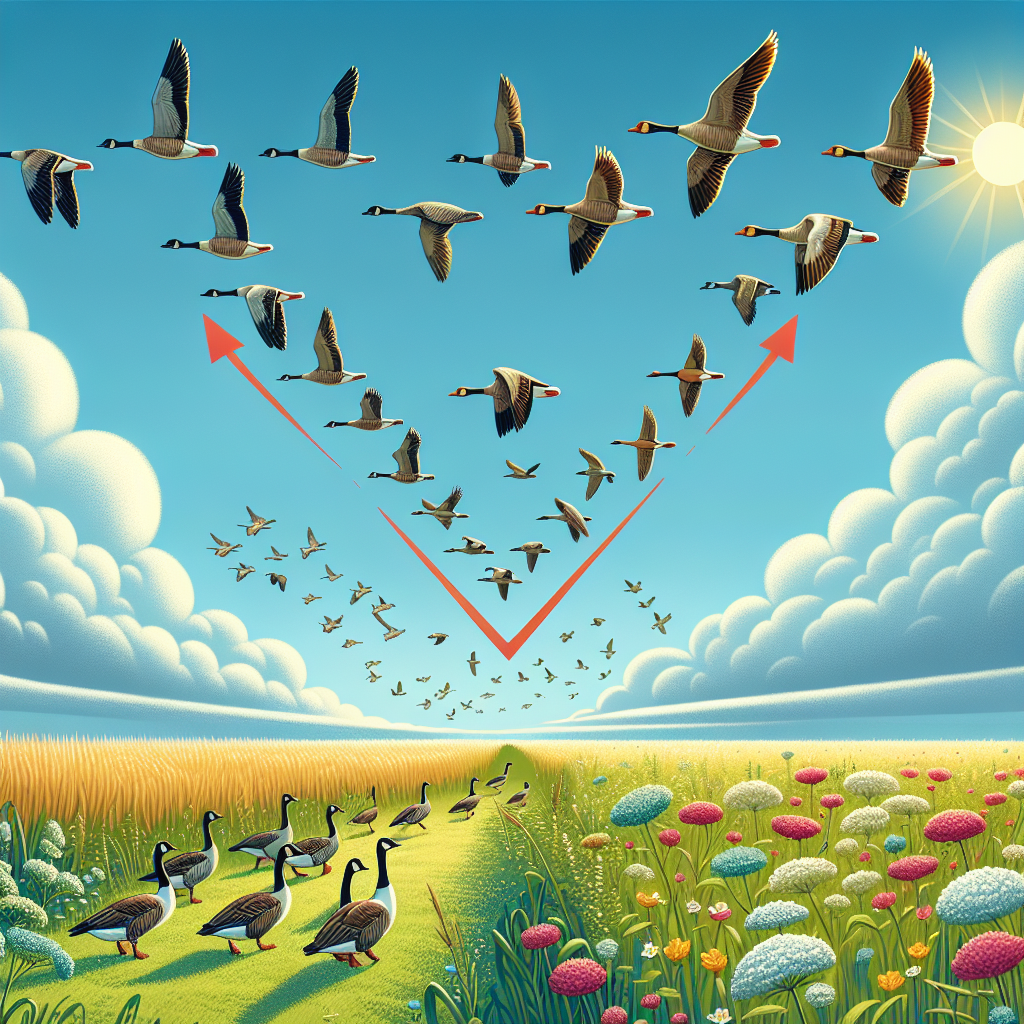===INTRO:===
Have you ever marveled at the sight of birds flying in a stunning V-formation, gliding effortlessly across the sky? This natural phenomenon raises numerous questions about the mechanics of flight and group dynamics in avian species. Why do birds fly in av formation? Understanding this intricate behavior can deepen our appreciation for the natural world and its evolutionary strategies. By delving into the reasons behind these formations, we can uncover essential insights into energy efficiency, social communication, and navigational techniques that are key to successful migration.
Understanding the Science Behind Avian Flight Patterns
Birds have developed various flight patterns, with the V-formation being one of the most fascinating. This distinctive shape is not merely aesthetic; it serves a crucial purpose in enhancing aerodynamic efficiency. As birds flap their wings, they create a vortex of air that reduces aerodynamic drag for those flying behind them. This phenomenon, known as upwash, allows trailing birds to conserve energy while maintaining speed. The scientific principles governing these formations are rooted in physics, particularly the study of airflow dynamics.
Recent studies highlight that the V-formation can maximize the benefits of this upwash, allowing larger groups to travel further with less effort. This is particularly advantageous during long migratory flights, where energy conservation can mean the difference between successful migration and exhaustion. The lead bird may experience increased drag but is often rotated out to allow others a turn in the advantageous positions, showcasing a remarkable level of cooperation and strategy among the flock.
Additionally, researchers have found that the angle and distance between individuals in the formation can affect efficiency. Birds adjust their positions based on wind conditions and their energy levels, demonstrating advanced decision-making capabilities. This adaptability not only aids in migration but speaks to the evolutionary advantages of social flight patterns for birds, allowing for a deeper understanding of their behavioral ecology.
The Benefits of V-Formation for Energy Efficiency
Energy conservation is paramount for migratory birds, particularly when traversing vast distances. Flying in a V-formation significantly reduces individual energy expenditure. The leader, while experiencing the most drag, creates a slipstream for the birds behind, allowing them to glide more effortlessly. Studies have demonstrated that birds flying in formation can save up to 30% of their energy compared to flying solo. This remarkable adaptation is a game-changer during lengthy migrations, where every ounce of energy counts.
Moreover, the dynamics of the V-formation facilitate easier communication among the flock. When birds are in close proximity, they can effectively coordinate their movements and adjust their flight patterns in response to each other’s actions, thus optimizing their collective efficiency. This collaborative behavior not only conserves energy but also creates a support system that enhances survival rates during challenging migrations.
Interestingly, energy efficiency is not limited to long-distance flights. Birds often adopt this formation even during shorter journeys, demonstrating an instinctual understanding of the advantages it provides. Whether traversing a few miles or migrating thousands, the V-formation is an essential tactic that underscores the evolutionary adaptations birds have developed to thrive in their environments.
Social Structure and Communication Among Flocking Birds
The social dynamics of birds flying in V-formation reveal a sophisticated network of communication and hierarchy. Within a flock, individual roles may shift, with more experienced birds often taking the lead while others provide support. This structure not only promotes cohesion but also strengthens social bonds among flock members. Birds rely heavily on visual and vocal cues to maintain formation and coordinate their movements, demonstrating a unique form of avian communication that often goes unnoticed.
Birds communicate through various vocalizations and body language while in flight, allowing them to adjust their positions as necessary. This real-time exchange of information is crucial, particularly when navigating changing weather conditions or encountering obstacles. The ability to respond to one another enhances the flock’s overall performance and ensures that all members can contribute to the collective effort of migration.
Moreover, the social structure within these formations can have broader implications for avian survival. By flying in groups, birds can benefit from reduced predation risks and increased foraging success. The cooperative nature of flocking behavior thus serves multiple purposes, including energy conservation and enhanced safety, creating a holistic approach to survival that is deeply embedded in avian behavior.
Navigational Strategies Utilized in Bird Migration Patterns
Navigating vast distances poses significant challenges for migratory birds. However, those that fly in V-formation often exhibit advanced navigational skills that are honed through instinct and experience. Birds use a combination of environmental cues—such as the position of the sun, stars, and Earth’s magnetic field—to determine their migratory routes. Flying in a formation allows them to stay oriented and maintain the direction of travel more effectively.
Additionally, the V-formation aids in reducing the likelihood of getting lost. By flying together, birds can correct their course collectively, minimizing the risk of straying from the intended path. This group-oriented navigation is indicative of a shared knowledge base, where younger or inexperienced birds can learn from their elders, thereby ensuring that critical migratory knowledge is passed down through generations.
The intricate relationship between navigation and social behavior within avian species highlights the complex interplay of instinct and environmental adaptation. As birds continue to rely on these sophisticated strategies for survival, their migratory patterns not only reflect their resilience but also serve as a testament to the evolutionary advantages of social flight formations.
===OUTRO:===
In conclusion, the question of why do birds fly in av formation unveils a rich tapestry of evolutionary strategies that encompass energy efficiency, social dynamics, and navigational skills. This knowledge not only enhances our understanding of avian behavior but also inspires us to appreciate the intricate connections that exist within nature. By observing these remarkable creatures, we can gain profound insights into cooperation, communication, and survival in the animal kingdom. If you are intrigued by the hidden complexities of bird migration and their flight patterns, consider exploring further or even engaging in bird-watching experiences to witness these extraordinary behaviors in action.
can you donate blood after a tattoocan you die from pancreatitiswindows 10 auto login registryRelevant LinkRelevant LinkRelevant LinkExploring 2024’s Innovations in Remote Patient Monitoring in CanadaEnhancing Cybersecurity Protocols in Canada’s 2024 Healthcare SystemExploring Blockchain Applications in Canadian Healthcare 2024Relevant LinkRelevant LinkRelevant LinkManaging Degenerative Disc Disease: The Role of YogaSubmitting Your Web Wrapped Curio: A Step-by-Step GuideStrategic Hiding Spots in Life is Strange Pool SceneRelevant LinkRelevant LinkRelevant LinkExploring the Impact of 40,000 Daily Steps on Weight LossEffective Yoga Poses for Optimal Weight Loss and WellnessComprehensive Reviews of Happy Mammoth Weight Loss ProgramRelevant LinkRelevant LinkRelevant Link




